As the leaves start to turn across Kansas City, from the tree-lined streets of Parkville to the historic homes in Liberty, homeowners are getting ready for cooler nights, pumpkin spice, and football season. But fall is also one of the most important times to take a good look at your roof.
Even if you can’t, or shouldn’t, climb up there yourself, there are many signs of roof damage you can safely spot from the ground. By catching problems early, you can prevent small issues from turning into costly leaks during the Midwest’s icy winters.
At Ryan Construction Systems, Inc., we specialize in roofing, siding, and remodeling across the Kansas City Metropolitan Area, and we’ve put together this guide to help you know what to look for.

Why Fall Is the Best Time for a Roof Check
Fall is the ideal season to evaluate your roof because:
- Milder weather makes it easier to schedule inspections and repairs before winter storms.
- Leaves and debris can clog gutters, creating water backup and damage.
- Storm damage from summer often shows up once temperatures drop.
According to Bold North Roofing, most winter roofing problems come from storm damage that wasn’t addressed in the fall. Loose shingles or small leaks now can become major issues when heavy snow and ice put extra weight on your roof.
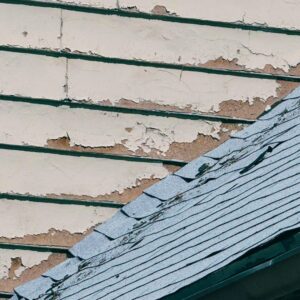
Step 1: Look for Visible Shingle Problems
From your yard, or with binoculars, you can often see early signs of shingle wear:
- Curling or cracked shingles: This often means your shingles are reaching the end of their life.
- Missing shingles: Gaps in the roof covering leave underlayment exposed to water and ice.
- Dark streaks or patches: What looks like dirt may actually be algae, moss, or lichen that traps moisture.
If your neighborhood has had hail or high winds recently, check if your shingles appear uneven, lifted, or bruised.
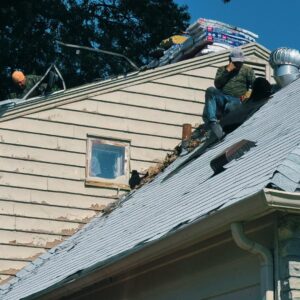
Step 2: Check Gutters and Downspouts
Clogged gutters are one of the most common fall roofing problems. Leaves and twigs prevent water from flowing off your roof, which can cause:
- Overflowing gutters that damage siding and landscaping
- Water pooling at the foundation
- Ice dams in the winter
From the ground, look for gutters that appear sagging, pulling away, or stained from water streaks. Also check for piles of shingle granules in your gutters or at the end of downspouts, a sign your shingles are deteriorating.
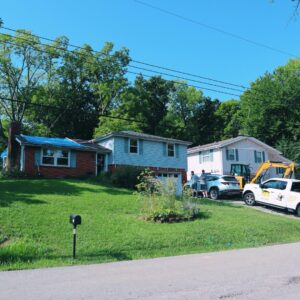
Step 3: Inspect Fascia, Soffits, and Siding
Your roof doesn’t work alone, it’s part of your home’s entire exterior system. Pay attention to:
- Fascia boards (the horizontal boards under the roof edge): look for rot, peeling paint, or water stains.
- Soffits (the underside of eaves): sagging or discoloration can signal leaks.
- Siding near the roofline: warped or bubbled siding may be a clue that water is getting behind it.
Local siding damage in neighborhoods like Gladstone or Platte City often worsens in the fall as trapped moisture expands and contracts with temperature swings.
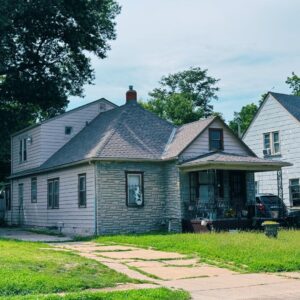
Step 4: Look Inside Your Home
You don’t even have to step outside to catch roof issues. Inside, watch for:
- Ceiling stains: Brown rings often point to roof leaks.
- Peeling or blistering paint: Caused by trapped moisture and poor ventilation.
- Attic inspection: If safe, peek into your attic with a flashlight. Look for damp insulation, sagging sheathing, or daylight shining through.
Even your garage ceiling or floor can reveal water stains you didn’t expect.
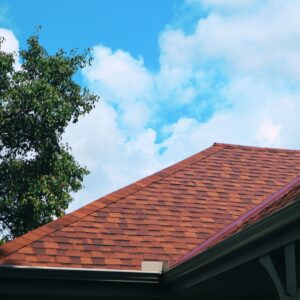
Step 5: Watch for Seasonal Red Flags
Certain fall conditions make roof damage easier to spot:
- Falling leaves: Check if piles are collecting on low-slope sections of your roof. They can hold water and lead to rot.
- Tree limbs: Dead branches hanging over your roof are a hazard during storms.
- Cool air leaks: If your energy bill is climbing, your roof may have gaps letting warm air escape.
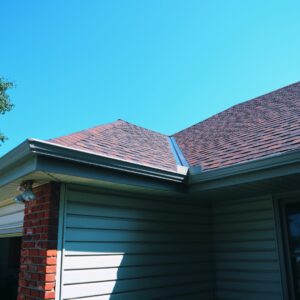
When to Call a Professional
While you can catch many early signs of roof trouble from the ground, a professional inspection is always recommended in the fall. A trained roofer can identify:
- Hidden storm damage not visible from the street
- Flashing issues around chimneys, skylights, and vents
- Ventilation or insulation problems that can cause ice dams
Regular fall inspections are a proactive way to extend your roof’s life and protect your home investment. As GAF emphasizes, spotting issues early helps you avoid expensive interior damage.
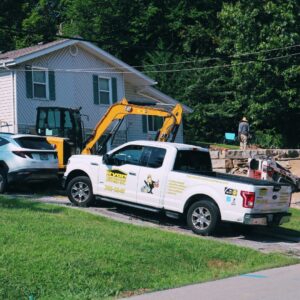
Roofing, Siding, and Remodeling in Kansas City
At Ryan Construction Systems, we’ve been helping Kansas City homeowners protect and enhance their homes for years. Whether you live in Riverside, Parkville, Liberty, or downtown KC, we provide:
- Roofing inspections, repairs, and replacements
- Siding installation and repair
- Gutter solutions to handle fall leaves
- Full-service remodeling and construction

We understand Midwest weather and how it impacts local homes, from summer storms to icy winters. Our team is here to ensure your roof is ready for whatever comes next.
Don’t wait until the first winter storm to find out your roof has hidden damage. A simple fall inspection can save you thousands in repairs and energy costs.
📞 Call Ryan Construction Systems today to schedule your free fall roof inspection.
Serving the Kansas City Metropolitan Area, we’re your trusted partner for roofing, siding, and remodeling.



